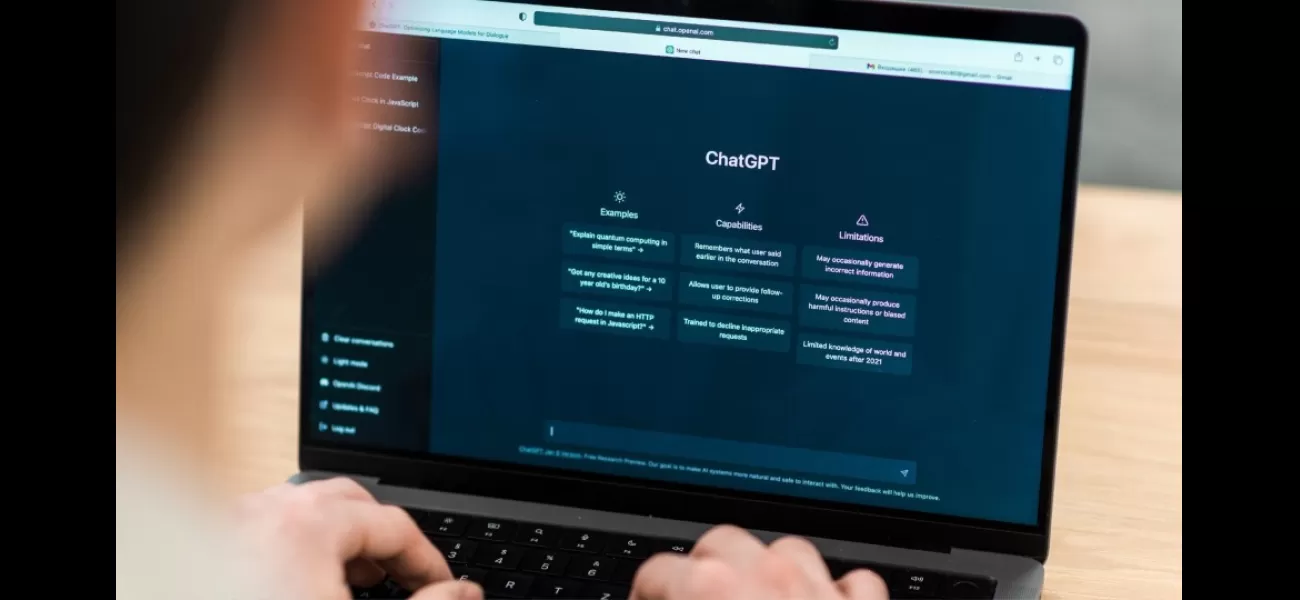Create effective prompts to get the most out of ChatGPT, plus 12 examples to get you started.
This article explores the complexities of ChatGPT prompts & provides useful tips & 12 examples to help you create powerful ones.
October 8th 2023.

ChatGPT is an advanced AI model capable of engaging in dynamic conversations, answering questions, and providing creative responses. To unlock the full potential of this technology, understanding the role of prompts is essential.
Prompts are the instructions users provide to the AI model to elicit specific responses. There are three main types of prompts: open-ended, specific, and conditional. The choice of words and phrasing of prompts can significantly influence the quality and relevance of the AI's responses. Moreover, prompts should be crafted carefully to ensure ethical and unbiased interactions with the AI.
To craft effective prompts, users should set clear objectives, provide context, and use explicit instructions. An iterative refinement approach and trial and error technique can also help users get the most out of their interactions with ChatGPT.
To illustrate the application of ChatGPT prompts, here are 12 practical examples. For general information, users can ask ChatGPT questions such as “Tell me about the history of ancient Egypt” or “Explain the concept of climate change in simple terms.” For creative writing, prompts like “Write a short story about a time-traveling detective” and “Compose a poem about the beauty of nature” can be used. For coding assistance, users can ask ChatGPT to help them write a Python code or debug a JavaScript function. Mathematical problem solving prompts such as “Solve the quadratic equation: ax^2 + bx + c = 0 for given values of a, b, and c” and “Find the derivative of f = 2x^3 – 5x^2 + 7x – 9” can also be used.
In summary, prompts play a pivotal role in effectively communicating with ChatGPT and ChatGPT alternatives. Understanding the intricacies of prompts, crafting them thoughtfully, and utilizing 12 practical examples are key to harnessing the power of ChatGPT and taking human-AI interactions to the next level.
ChatGPT has revolutionized the way humans interact with Artificial Intelligence. This advanced AI model can engage in dynamic conversations, answer questions, and even provide creative responses. The key to unlocking ChatGPT's full potential, however, lies in understanding the pivotal role of prompts.
Prompts are the instructions that steer the AI's responses, and are essential for effectively communicating with ChatGPT and ChatGPT alternatives. In this article, we will cover the intricacies of prompts, and provide valuable insights and practical tips to help you use ChatGPT effectively.
When it comes to AI-driven communication, the term 'prompts' plays a central role. To make the most of ChatGPT, you must gain a deep understanding of what prompts are, their various types, and how they influence the responses generated by the AI model.
Prompts, in the context of ChatGPT, are essentially the input or instructions that users provide to the AI model to elicit specific responses. These prompts serve as the communication bridge between users and the AI, guiding ChatGPT to generate coherent and contextually relevant replies.
There are three main types of prompts: open-ended prompts, specific prompts, and conditional prompts. Open-ended prompts are broad and leave room for creativity in AI responses. Specific prompts, on the other hand, are more precise and direct. Conditional prompts introduce a conditional clause that ChatGPT must consider when generating responses.
The choice of words used in a prompt has a big impact on the quality and relevance of ChatGPT's responses. Clear and concise wording helps ensure that the AI understands the user's intent accurately. Prompts can also inadvertently introduce bias into AI responses, so users should be mindful of the language they use.
To ensure productive and meaningful conversations with ChatGPT, it is crucial to craft prompts thoughtfully. Effective prompts set the stage for fruitful interactions with the AI model. Start by clearly defining what you want to achieve from the interaction. Identify the key pieces of information you need, and provide context to the model. Use explicit instructions to define the expectations from the AI, and be open to experimenting with different variations. Consider refining your prompts through iterations, and pay attention to what works and what doesn’t.
To give you an idea of how to use ChatGPT with different tasks and scenarios, here are 12 practical examples of prompts you can use:
General Information:
“Tell me about the history of ancient Egypt.”
“Explain the concept of climate change in simple terms.”
Creative Writing:
“Write a short story about a time-traveling detective.”
“Compose a poem about the beauty of nature.”
Coding Assistance:
“Help me write a Python code to calculate Fibonacci numbers.”
“Debug this JavaScript function that’s not working as expected.”
Mathematical Problem Solving:
“Solve the quadratic equation: ax^2 + bx + c = 0 for given values of a, b, and c.”
“Find the derivative of f = 2x^3 – 5x^2 + 7x – 9.”
By understanding the intricacies of prompts and crafting them thoughtfully, you can maximize the utility and quality of interactions with ChatGPT. Whether you seek creative storytelling, factual information, or problem-solving assistance, forming the right type of prompt with careful wording can make all the difference in the quality of responses received. Moreover, being aware of bias and ethical considerations ensures responsible and respectful interactions with AI, promoting a more inclusive and informative AI-driven communication experience.
Prompts are the instructions users provide to the AI model to elicit specific responses. There are three main types of prompts: open-ended, specific, and conditional. The choice of words and phrasing of prompts can significantly influence the quality and relevance of the AI's responses. Moreover, prompts should be crafted carefully to ensure ethical and unbiased interactions with the AI.
To craft effective prompts, users should set clear objectives, provide context, and use explicit instructions. An iterative refinement approach and trial and error technique can also help users get the most out of their interactions with ChatGPT.
To illustrate the application of ChatGPT prompts, here are 12 practical examples. For general information, users can ask ChatGPT questions such as “Tell me about the history of ancient Egypt” or “Explain the concept of climate change in simple terms.” For creative writing, prompts like “Write a short story about a time-traveling detective” and “Compose a poem about the beauty of nature” can be used. For coding assistance, users can ask ChatGPT to help them write a Python code or debug a JavaScript function. Mathematical problem solving prompts such as “Solve the quadratic equation: ax^2 + bx + c = 0 for given values of a, b, and c” and “Find the derivative of f = 2x^3 – 5x^2 + 7x – 9” can also be used.
In summary, prompts play a pivotal role in effectively communicating with ChatGPT and ChatGPT alternatives. Understanding the intricacies of prompts, crafting them thoughtfully, and utilizing 12 practical examples are key to harnessing the power of ChatGPT and taking human-AI interactions to the next level.
ChatGPT has revolutionized the way humans interact with Artificial Intelligence. This advanced AI model can engage in dynamic conversations, answer questions, and even provide creative responses. The key to unlocking ChatGPT's full potential, however, lies in understanding the pivotal role of prompts.
Prompts are the instructions that steer the AI's responses, and are essential for effectively communicating with ChatGPT and ChatGPT alternatives. In this article, we will cover the intricacies of prompts, and provide valuable insights and practical tips to help you use ChatGPT effectively.
When it comes to AI-driven communication, the term 'prompts' plays a central role. To make the most of ChatGPT, you must gain a deep understanding of what prompts are, their various types, and how they influence the responses generated by the AI model.
Prompts, in the context of ChatGPT, are essentially the input or instructions that users provide to the AI model to elicit specific responses. These prompts serve as the communication bridge between users and the AI, guiding ChatGPT to generate coherent and contextually relevant replies.
There are three main types of prompts: open-ended prompts, specific prompts, and conditional prompts. Open-ended prompts are broad and leave room for creativity in AI responses. Specific prompts, on the other hand, are more precise and direct. Conditional prompts introduce a conditional clause that ChatGPT must consider when generating responses.
The choice of words used in a prompt has a big impact on the quality and relevance of ChatGPT's responses. Clear and concise wording helps ensure that the AI understands the user's intent accurately. Prompts can also inadvertently introduce bias into AI responses, so users should be mindful of the language they use.
To ensure productive and meaningful conversations with ChatGPT, it is crucial to craft prompts thoughtfully. Effective prompts set the stage for fruitful interactions with the AI model. Start by clearly defining what you want to achieve from the interaction. Identify the key pieces of information you need, and provide context to the model. Use explicit instructions to define the expectations from the AI, and be open to experimenting with different variations. Consider refining your prompts through iterations, and pay attention to what works and what doesn’t.
To give you an idea of how to use ChatGPT with different tasks and scenarios, here are 12 practical examples of prompts you can use:
General Information:
“Tell me about the history of ancient Egypt.”
“Explain the concept of climate change in simple terms.”
Creative Writing:
“Write a short story about a time-traveling detective.”
“Compose a poem about the beauty of nature.”
Coding Assistance:
“Help me write a Python code to calculate Fibonacci numbers.”
“Debug this JavaScript function that’s not working as expected.”
Mathematical Problem Solving:
“Solve the quadratic equation: ax^2 + bx + c = 0 for given values of a, b, and c.”
“Find the derivative of f = 2x^3 – 5x^2 + 7x – 9.”
By understanding the intricacies of prompts and crafting them thoughtfully, you can maximize the utility and quality of interactions with ChatGPT. Whether you seek creative storytelling, factual information, or problem-solving assistance, forming the right type of prompt with careful wording can make all the difference in the quality of responses received. Moreover, being aware of bias and ethical considerations ensures responsible and respectful interactions with AI, promoting a more inclusive and informative AI-driven communication experience.
[This article has been trending online recently and has been generated with AI. Your feed is customized.]
[Generative AI is experimental.]
0
0
Submit Comment





